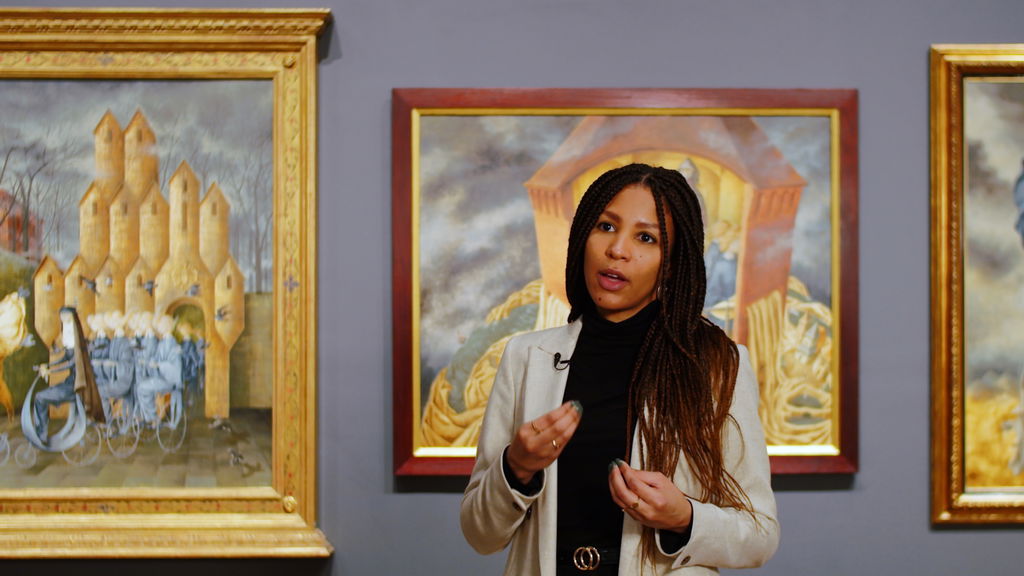Home
Talks
Jeremy Deller: 'It is what it is.'
Jeremy Deller: 'It is what it is.'
From the imperialistic history paintings of the nineteenth century to solemn and harrowing renderings of the First World War, many artists have created emotionally charged artworks in response to war. Over the course of the last century, conceptions of 'war' and 'art' have shifted dramatically, raising questions about the best way to express the intensity of conflict and what it is to fight.
Artist Jeremy Deller discusses his fascination with war as an artistic subject, and considers the social and political ramifications when artists depict conflict. Reflecting on the tradition of history paintings, Deller proposes that his own large-scale, collaborative works like The Battle of Orgreave (2001), It Is What It Is (2009) and We're Here Because We're Here (2016) are like 'public inquiries', creating 'living memorials for the dead'.
Time Period:
21st century
Themes:
Jeremy Deller is a British conceptual, video and installation artist. Born in London in 1966, he studied BA History of Art at the Courtauld Institute in London and completed an MA at the University of Sussex. After meeting Andy Warhol in 1986, Deller spent two weeks at The Factory in New York. He commenced his own art practice in the early 1990s. In 1993, he used his childhood home for an exhibition titled 'Open Bedroom' whilst his parents were away on holiday.
Deller's works are often politically charged and collaborative, as in his Battle of Orgreave, 2001, which re-enacted a notoriously violent confrontation between police and thousands of striking miners in 1984. His work is also typically ephemeral in nature and exists outside of a traditional gallery context; for instance, in 2016 We're Here Because We're Here saw some 1,600 volunteers dressed in replica British military uniforms of World War I appear in groups in public spaces.
Deller won the Turner Prize in 2004, dedicating it to "everyone who cycles, everyone who cycles in London, everyone who looks after wildlife, and the Quaker movement"; in 2010, he was awarded the Albert Medal for the Royal Society for the Encouragement of the Arts, Manufacture and Commerce (RSA); and he served as a trustee of the Tate Gallery from 2007-2011.
Watch more
Watch more

10:22
Dazzled! How a British artist transformed the seas of WWI
Dr James Fox tells us how artist Norman Wilkinson came up with a dazzling solution to protect Britain’s navy from the enemy in WWI.

9:13
Paul Nash: The Landscape of Modernism
David Boyd Haycock traces the life and career of Paul Nash, who 're-dreamt the landscape in a Modernist manner'.

8:17
Surrealism: Imagining A New World
Why did Surrealism appeal to artists across the world?

10:22
Dazzled! How a British artist transformed the seas of WWI
Dr James Fox tells us how artist Norman Wilkinson came up with a dazzling solution to protect Britain’s navy from the enemy in WWI.

9:13
Paul Nash: The Landscape of Modernism
David Boyd Haycock traces the life and career of Paul Nash, who 're-dreamt the landscape in a Modernist manner'.

8:17
Surrealism: Imagining A New World
Why did Surrealism appeal to artists across the world?

14:17
Omar Victor Diop: Black Subjects in the Frame
‘What gets remembered and what doesn’t?’ Mark Sealy examines searing moments in Black history through the lens of Omar Victor Diop’s powerful portraits.

8:44
Ashley Bickerton: ‘Looking for Something Beyond’
Join Ashley Bickerton on the Hawaii beach where he first caught a wave to hear how a nomadic lifestyle has influenced his practice.

5:20
Master of Realism: Jan van Eyck’s Arnolfini Portrait
Martin Gayford presents some of the mysteries behind one of art history’s most recognisable paintings: The Arnolfini Portrait.